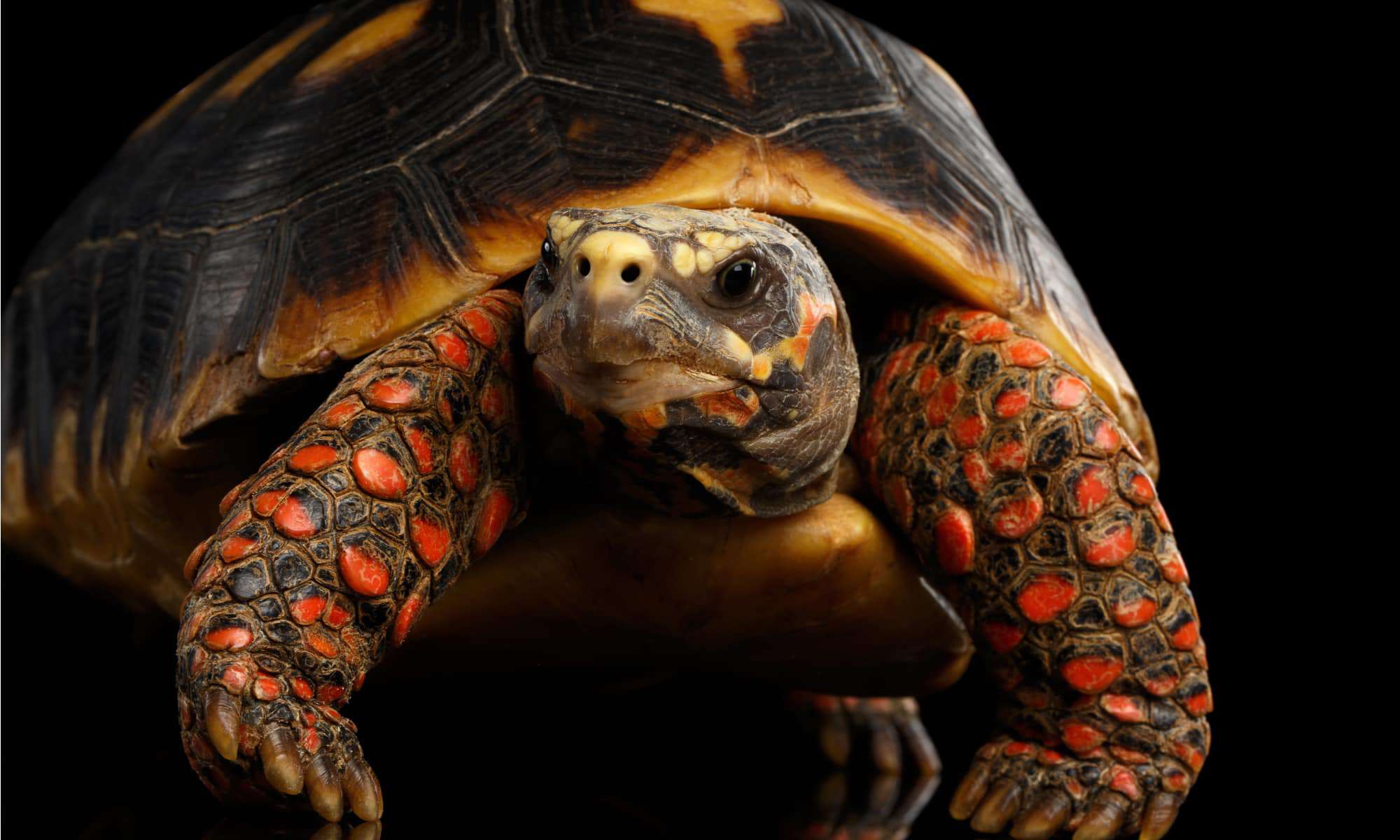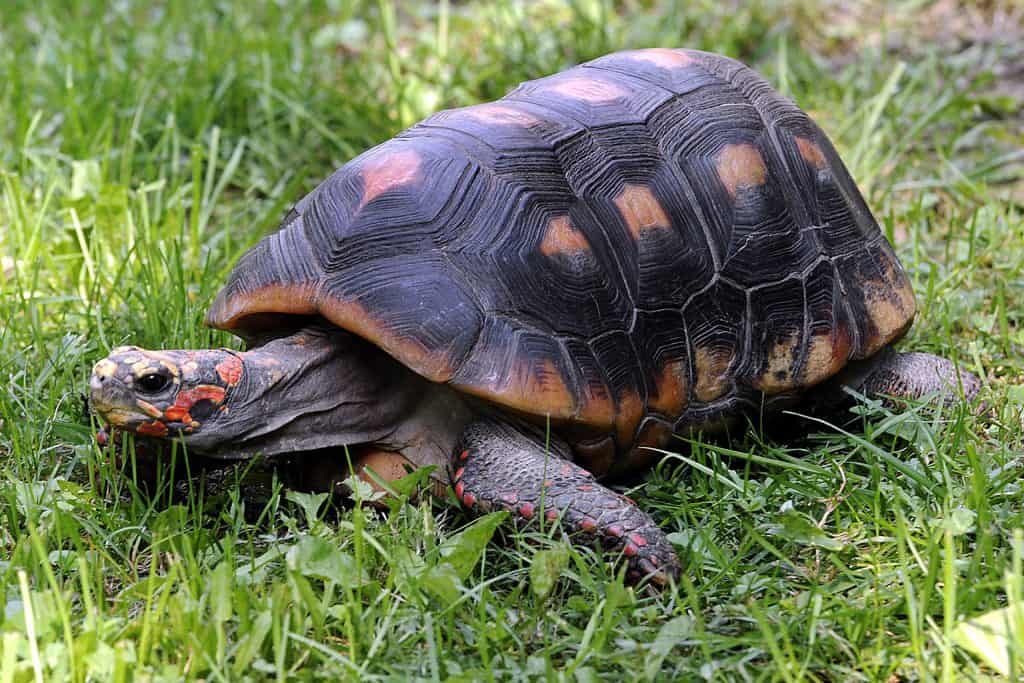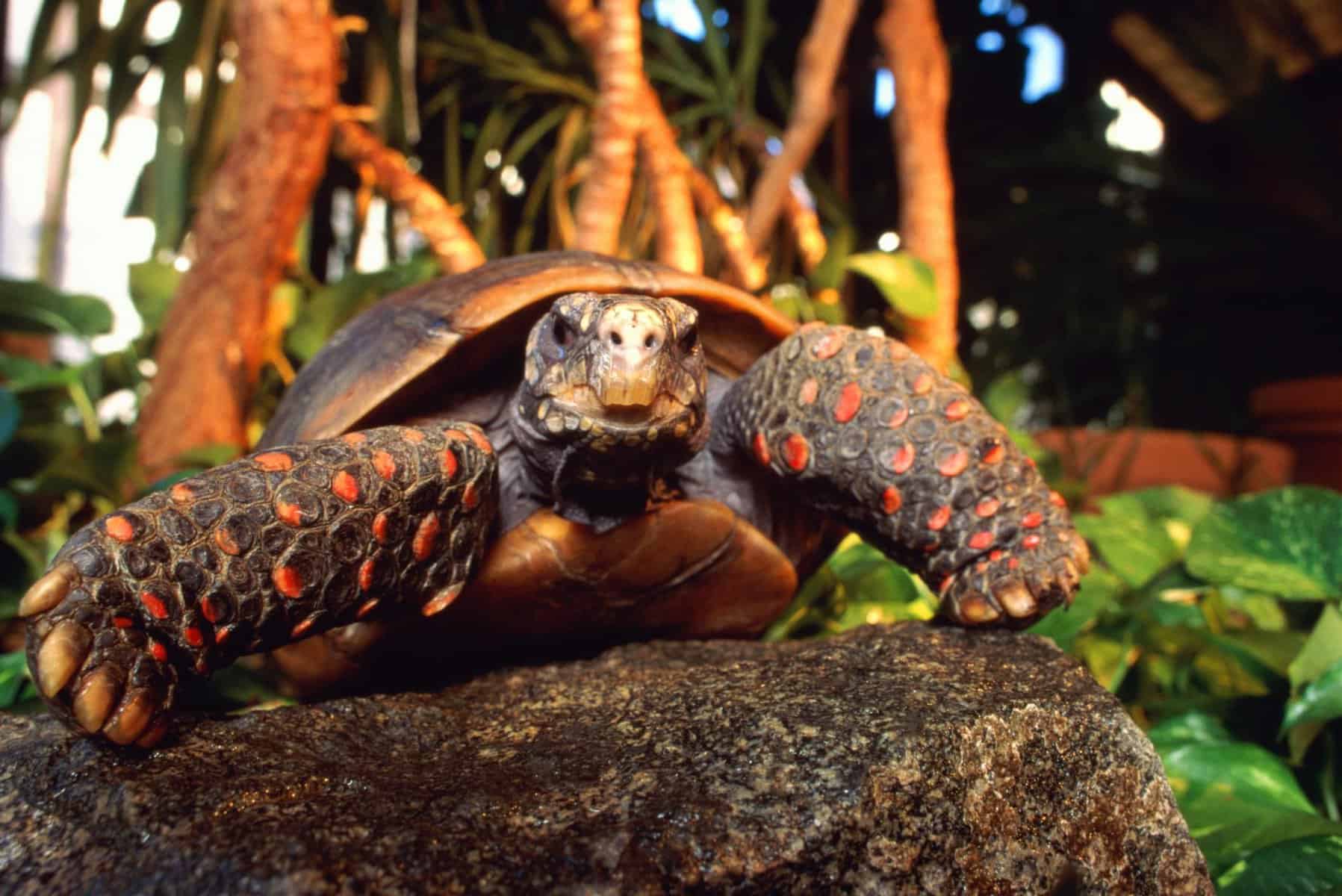Red-foot tortoises typically grow to be about 12-14 inches in length, with some individuals reaching up to 16 inches.
The Ultimate Guide to Understanding the Size of Red Foot Tortoises
Red foot tortoises are a popular species of tortoise that are native to the forests of South America. They are known for their vibrant red and orange scales on their legs and head, which give them their name. These tortoises are highly sought after as pets due to their docile nature and beautiful appearance.
Understanding the size of red foot tortoises is crucial for their care and well-being. These tortoises can grow quite large, with males reaching lengths of up to 16 inches and females reaching lengths of up to 14 inches. It is important for owners to have a good understanding of their tortoise’s size in order to provide them with the appropriate enclosure and care.
The Importance of Understanding Tortoise Size
Size matters when it comes to tortoises, as it can have a significant impact on their health and well-being. A tortoise that is too small for its enclosure may become stressed and exhibit abnormal behaviors such as pacing or trying to escape. On the other hand, a tortoise that is too large for its enclosure may not have enough space to move around and exercise, which can lead to obesity and other health issues.
In addition, understanding the size of a tortoise is important for providing them with the proper diet and nutrition. Tortoises have specific dietary needs based on their size, and feeding them an improper diet can lead to nutritional deficiencies or obesity. By knowing the size of your red foot tortoise, you can ensure that you are providing them with the appropriate amount and types of food.
How to Measure the Size of Red Foot Tortoises
Measuring the size of a red foot tortoise is a relatively simple process that can be done at home. Here is a step-by-step guide on how to measure your tortoise:
1. Place your tortoise on a flat surface, such as a table or the floor.
2. Use a soft measuring tape or ruler to measure the length of your tortoise from the tip of its head to the end of its shell.
3. Measure the width of your tortoise by placing the measuring tape or ruler across the widest part of its shell.
4. To measure the height of your tortoise, place the measuring tape or ruler at the highest point of its shell and measure straight down to the surface it is on.
It is important to handle your tortoise gently and avoid causing any stress or discomfort during the measuring process.
Factors that Affect the Size of Red Foot Tortoises
There are several factors that can affect the size of red foot tortoises. These include genetics, diet, environment, and health.
Genetics play a significant role in determining the size of a tortoise. Some individuals may have genes that predispose them to grow larger or smaller than average. It is important to note that while genetics can influence size, it is not the sole determining factor.
Diet also plays a crucial role in the size of red foot tortoises. A balanced and nutritious diet is essential for their growth and development. Tortoises should be fed a variety of leafy greens, vegetables, fruits, and occasional protein sources such as insects or cooked meat. Providing them with a diet that meets their nutritional needs will help ensure they reach their full potential size.
The environment in which a red foot tortoise is kept can also impact their size. Tortoises that are kept in small enclosures with limited space to move around may not grow as large as those that have ample room to exercise and explore. Additionally, temperature and humidity levels can affect their growth rate and overall size.
Lastly, the health of a red foot tortoise can impact their size. Tortoises that are suffering from illness or disease may not grow as large as healthy individuals. It is important to provide regular veterinary care and monitor your tortoise’s health to ensure they are growing and developing properly.
Average Size of Male and Female Red Foot Tortoises
There are differences in size between male and female red foot tortoises. Males tend to be larger than females, both in terms of length and weight. On average, males can reach lengths of up to 16 inches and weigh between 10-15 pounds. Females, on the other hand, typically reach lengths of up to 14 inches and weigh between 7-10 pounds.
It is important to note that these are average sizes and individual tortoises may vary. Some males may grow larger than average, while others may be smaller. The same applies to females. It is also worth mentioning that the size of a tortoise can be influenced by factors such as genetics, diet, environment, and health.
Growth Rate of Red Foot Tortoises
Red foot tortoises have a relatively slow growth rate compared to other species of tortoises. It can take several years for them to reach their full adult size. On average, red foot tortoises grow about 1 inch per year during their first few years of life. However, growth rates can vary depending on factors such as genetics, diet, environment, and health.
Factors that can affect the growth rate of red foot tortoises include the quality and quantity of their diet. Tortoises that are fed a balanced and nutritious diet will typically grow at a faster rate than those that are not receiving proper nutrition. Additionally, providing them with a spacious enclosure that allows for exercise and movement can also promote healthy growth.
It is important to monitor the growth rate of your red foot tortoise to ensure they are developing properly. If you notice any significant changes in their growth rate or if they are not growing at all, it may be a sign of an underlying health issue and you should consult a veterinarian.
How to Determine the Age of Red Foot Tortoises
Determining the age of a red foot tortoise can be challenging, as they do not have obvious physical markers that indicate their age. However, there are a few methods that can be used to estimate their age.
One method is to examine the growth rings on the scutes of their shell. These rings can provide a rough estimate of their age, with each ring representing a year of growth. However, this method is not always accurate, as the growth rings can be affected by factors such as diet and environment.
Another method is to look at the size and condition of their shell. Younger tortoises will have smoother and more vibrant shells, while older tortoises may have worn or damaged shells. However, this method is also not foolproof, as the condition of a tortoise’s shell can be influenced by factors such as diet and environment.
The most accurate way to determine the age of a red foot tortoise is through documentation. If you have information about when and where the tortoise was hatched, you can use this information to estimate their age. However, if you do not have this information, it can be difficult to determine their exact age.
Common Misconceptions about Red Foot Tortoise Size
There are several common misconceptions about the size of red foot tortoises that need to be debunked. One common misconception is that all red foot tortoises will grow to be large in size. While it is true that red foot tortoises can grow quite large, there is variation in size among individuals. Some tortoises may reach their full adult size and others may not.
Another misconception is that feeding a tortoise a high-protein diet will make them grow larger. While protein is an important part of a tortoise’s diet, feeding them excessive amounts of protein can actually be harmful to their health. It is important to provide a balanced and nutritious diet that meets their specific nutritional needs.
Lastly, some people believe that keeping a tortoise in a small enclosure will stunt their growth and keep them small. While it is true that providing a tortoise with a small enclosure can limit their ability to exercise and move around, it will not necessarily stunt their growth. Tortoises have a natural growth rate that is determined by factors such as genetics, diet, environment, and health.
Recommended Enclosure Size for Red Foot Tortoises
The size of the enclosure for a red foot tortoise is an important consideration for their health and well-being. A minimum enclosure size for a red foot tortoise should be at least 4 feet by 8 feet, with a height of at least 2 feet. This will provide them with enough space to move around and exercise.
However, the ideal enclosure size for a red foot tortoise is even larger. Ideally, the enclosure should be as large as possible, allowing the tortoise to have plenty of room to roam and explore. A larger enclosure will also provide more opportunities for natural behaviors such as digging and basking.
It is important to provide a variety of hiding spots, basking areas, and substrate options in the enclosure to mimic their natural habitat. This will help keep them mentally stimulated and physically active.
Tips for Maintaining Healthy Tortoise Size
Maintaining a healthy size for your red foot tortoise is essential for their overall health and well-being. Here are some tips to help you ensure they are growing and developing properly:
1. Provide a balanced and nutritious diet: Feed your tortoise a variety of leafy greens, vegetables, fruits, and occasional protein sources such as insects or cooked meat. Avoid feeding them excessive amounts of protein or foods that are high in fat or sugar.
2. Encourage exercise and activity: Provide your tortoise with ample space to move around and exercise. This can be done by providing a large enclosure with plenty of room to roam and explore. You can also provide them with toys and enrichment activities to keep them mentally stimulated.
3. Monitor their health: Regularly monitor your tortoise’s health and consult a veterinarian if you notice any changes in their growth rate or overall condition. Regular veterinary care is important for ensuring they are growing and developing properly.
4. Maintain proper temperature and humidity levels: Red foot tortoises require specific temperature and humidity levels to thrive. Make sure their enclosure is properly heated and humidified to provide them with the optimal conditions for growth.
5. Avoid overfeeding: Overfeeding can lead to obesity and other health issues in tortoises. Follow the recommended feeding guidelines for your tortoise’s size and monitor their weight regularly to ensure they are not becoming overweight.
The Key to a Happy and Healthy Red Foot Tortoise
Understanding the size of red foot tortoises is crucial for their care and well-being. By knowing their size, you can provide them with the appropriate enclosure, diet, and care to ensure they are growing and developing properly. It is important to monitor their growth rate, provide them with a balanced diet, and create an environment that allows for exercise and activity. By following these guidelines, you can help ensure that your red foot tortoise lives a happy and healthy life.
Originally posted 2024-02-08 09:36:06.



